Asif Hoque’s “The American Loverboy” is currently on view at Taymour Grahne Projects in London through September 9. The artist’s mythologies are inhabited by gods and creatures that bring narratives and identities to life through creolized sagas that speak of the artist’s own experiences, and simultaneously create an authentic depiction of experiences that resonate with many. His epistemologies merge ontological fragments of Bangladeshi heritage with the cultural context of life in Italy and the USA. As Hoque intuitively taps into an ancestral heritage and energy that accompanies him and instinctively guides him, his artistic practice brings forth conceptually textured multi-dimensional and powerful representations.
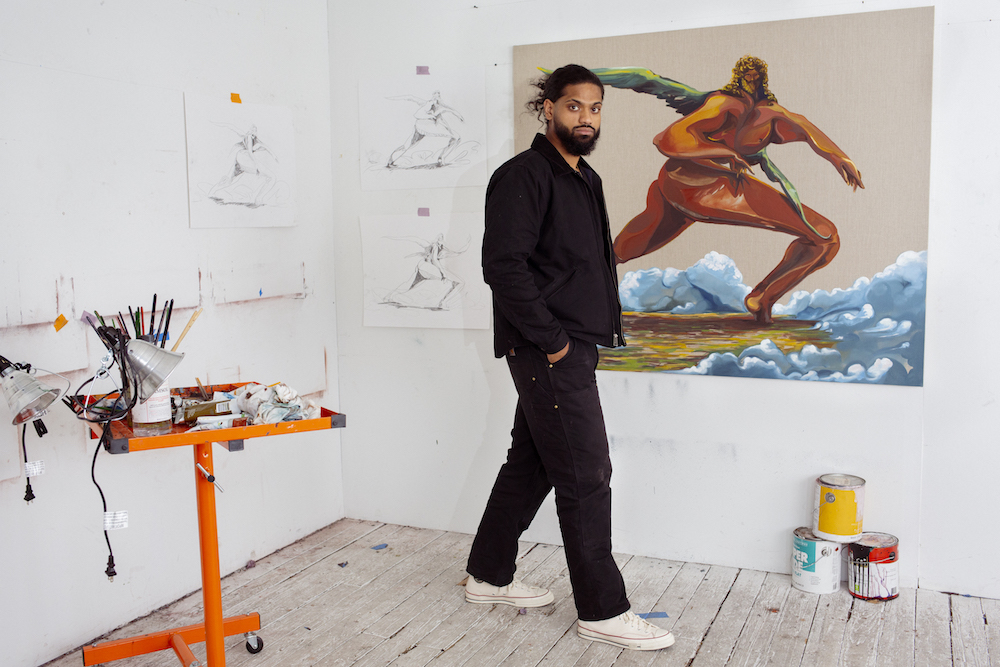 Asif Hoque, photo by Garey Quinn, courtesy of the artist.
Asif Hoque, photo by Garey Quinn, courtesy of the artist.
Hoque’s early works highlight his knowledge of and fascination with classical fine arts, but with the progression of his practice and personal growth, he continues to challenges himself as well as his audience to explore aspects of his art that are authentic and—through incorporating references to the Western as well as South Asian art historical canon—increasingly demonstrate an understanding, appreciation, and presence of his cultural heritage.
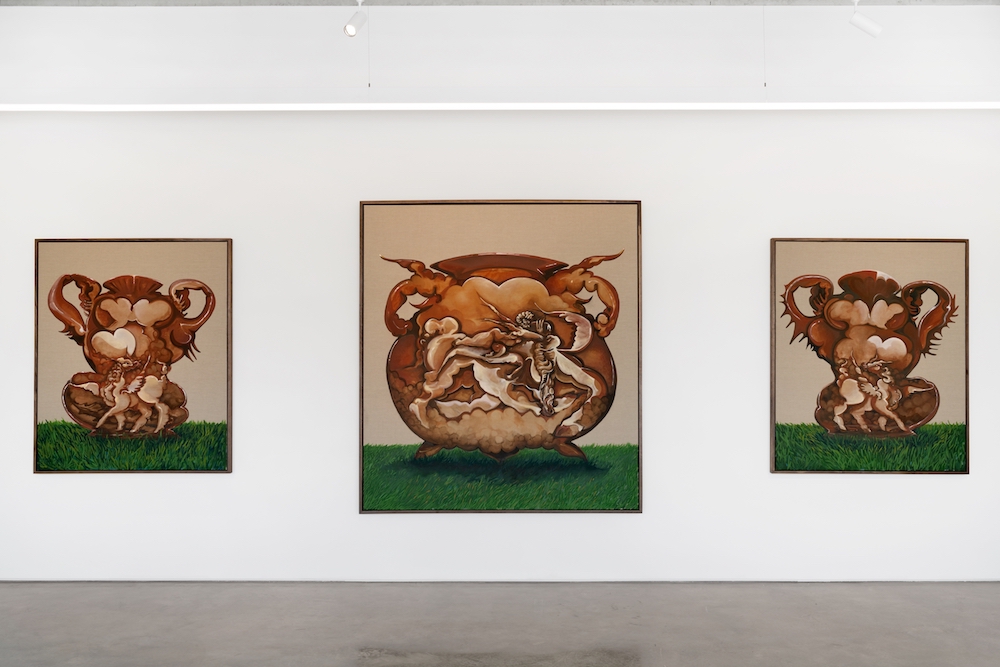 Asif Hoque, installation view of “Terracotta” at Mindy Solomon Gallery, photo by Zach Balber, courtesy of Mindy Solomon Gallery and the artist.
Asif Hoque, installation view of “Terracotta” at Mindy Solomon Gallery, photo by Zach Balber, courtesy of Mindy Solomon Gallery and the artist.
His decision to paint and draw in various shades of brown goes beyond aesthetic choice, and literal references to clay and pottery traditions, but rather firmly shows his love for his skin tone and an intentional representation of the South Asian community and diaspora. Another deliberate choice is the partial exposure of the raw linen. Each work has a component of naturality, almost unaltered by the artist’s hands, it is an expression of his thoughts, offering a calm space for reflection that has not been changed by life experiences that define and surround the protagonists of his narratives.
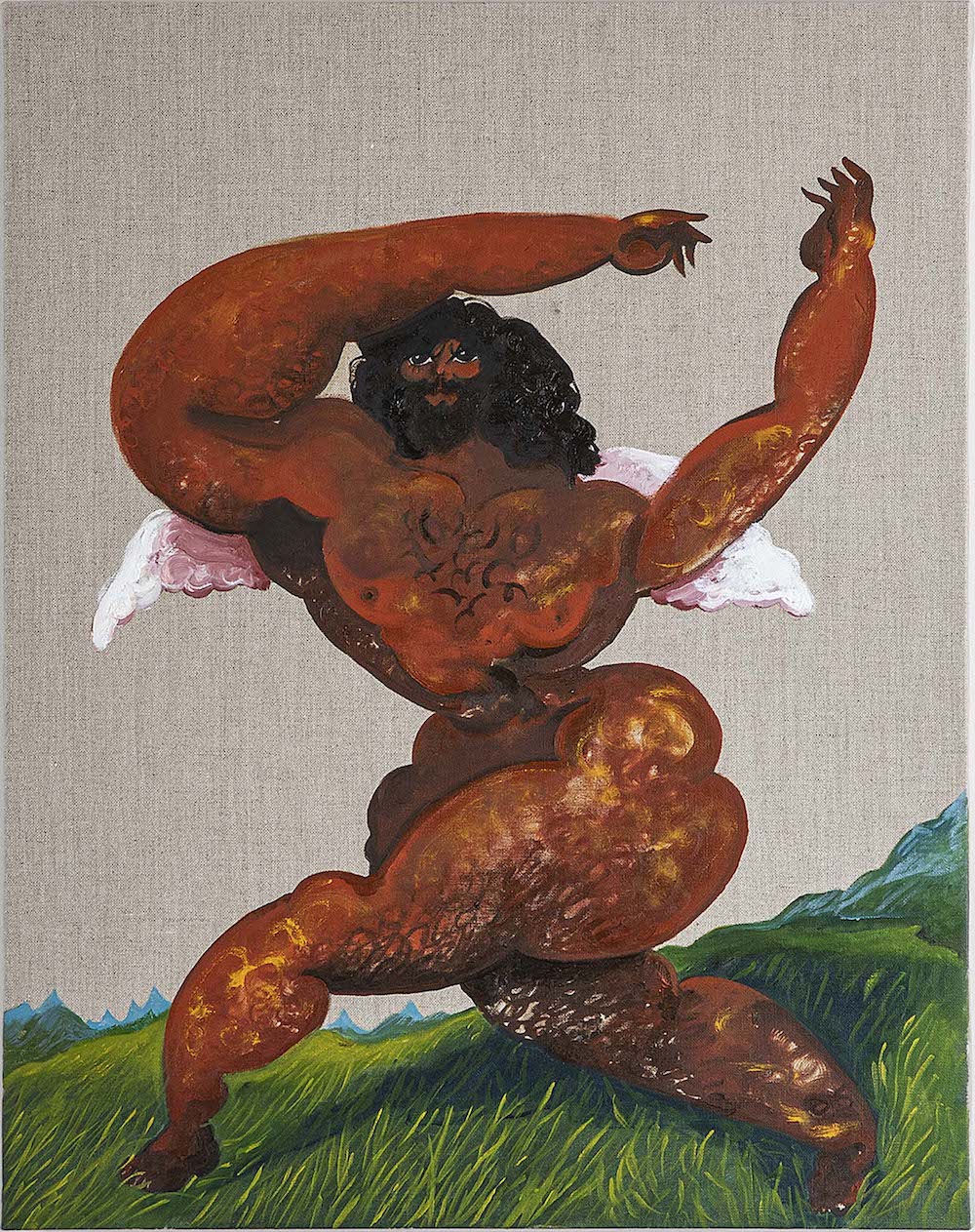 Asif Hoque, “Guiding Kapidasa Await Their Turn to Escort the Auspicious duo 2,” 2020, photo by Zach Balber, courtesy of Mindy Solomon Gallery and the artist.
Asif Hoque, “Guiding Kapidasa Await Their Turn to Escort the Auspicious duo 2,” 2020, photo by Zach Balber, courtesy of Mindy Solomon Gallery and the artist.
The concept of the “in between,” of cultural hybridity in flux, enters the canvas where paint and linen touch. Living “in between” has been a defining experience for Hoque. This “in between” space—culturally, contextually, conceptually, is also the space where his artistic practice develops. He fills the spaces with narratives that reflect his life. Born to Bangladeshi parents living in Rome, Hoque then spent formative years in West Palm Beach before moving to New York to pursue his career as an artist. The artist often shares how adaptation and a desire to blend in shaped his identity as a child, connecting closely with the LatinX and Caribbean communities of South Florida. Today, he is affirmed in a strong connection to his Southeast Asian heritage and Muslim faith that creates the basis for a life lived in between various cultural contexts, and for a rich and deeply thoughtful multi-dimensional practice.
Hoque’s paintings appear perpetually in motion—just as any ontological considerations—seemingly aligned with the natural movement of life and life cycles, hinting at joy and dance, and a meaningful coming together of souls. The narratives he presents continue past the moment the viewer engages with the work. We know each protagonist and character has a past, a history, and a future, while we share a fleeting moment in the present. The artist’s circular motion and rounded shapes create intimate images that invite a soft gaze yet always claim agency for their protagonists. Each character we encounter owns their story and holds space and power. Whether placed on a pedestal to literally direct our gaze up at them, or connected to the elements and placed into a landscape of mountains, oceans, grassland and clouds to walk, dance, and fly in their full glory, Hoque’s characters unequivocally demand attention.
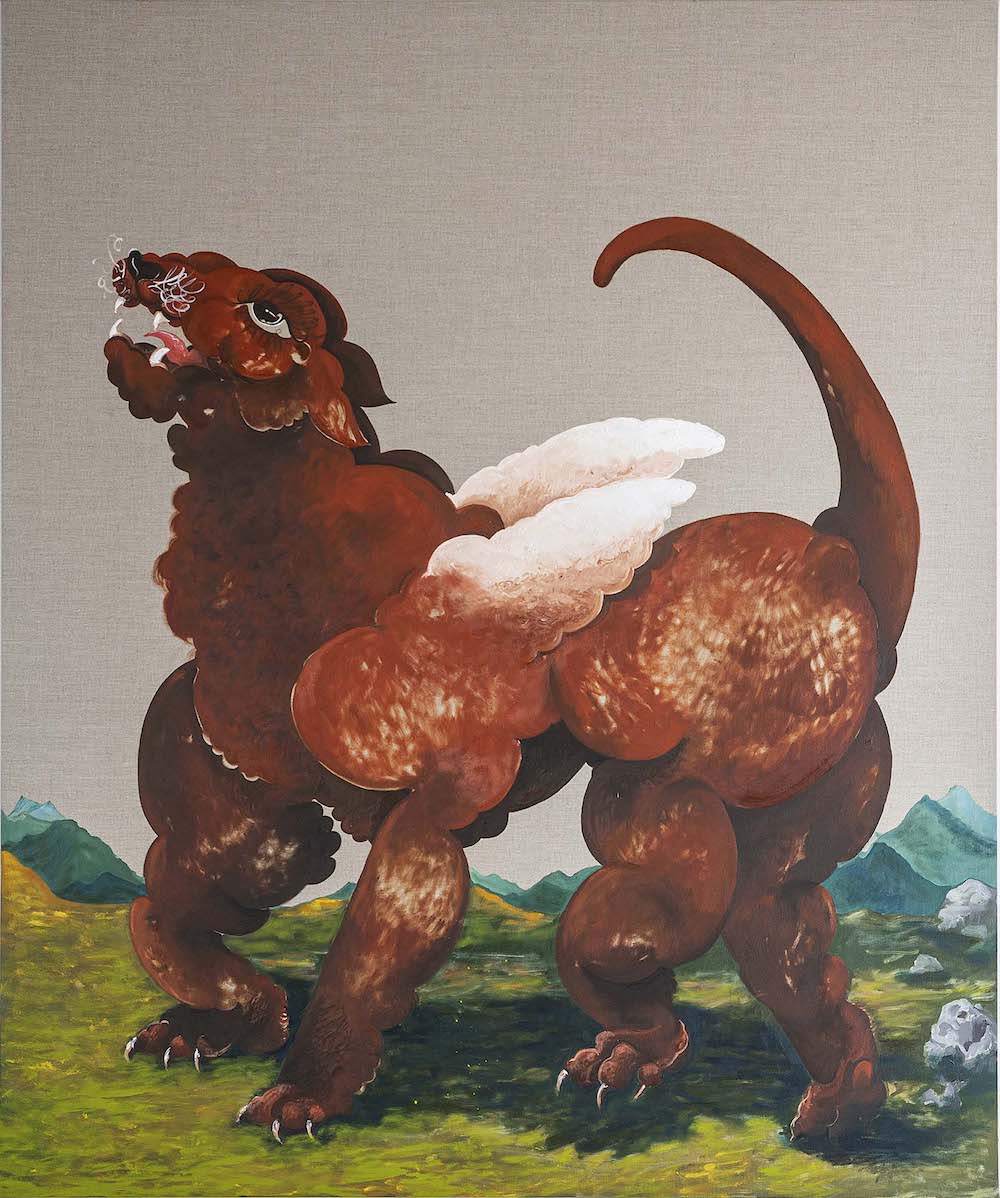 Asif Hoque, “Singing Sinha 1,” 2020, photo by Zach Balber, courtesy of Mindy Solomon Gallery and the artist.
Asif Hoque, “Singing Sinha 1,” 2020, photo by Zach Balber, courtesy of Mindy Solomon Gallery and the artist.
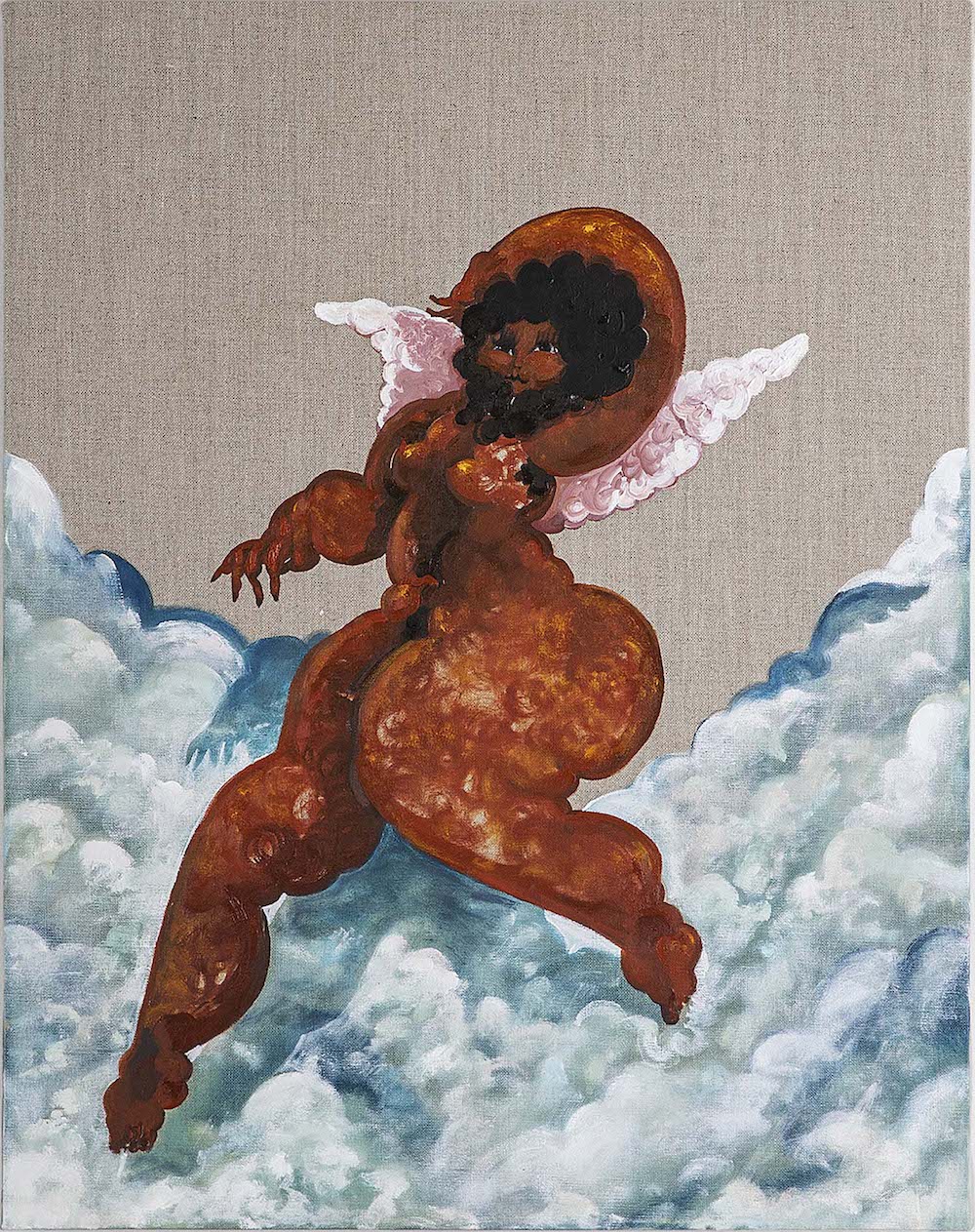 Asif Hoque, “Kapidasa Guiding the Aria of the Kumari and Mesa,” 2020, photo by Zach Balber, courtesy of Mindy Solomon Gallery and the artist.
Asif Hoque, “Kapidasa Guiding the Aria of the Kumari and Mesa,” 2020, photo by Zach Balber, courtesy of Mindy Solomon Gallery and the artist.
In the “Lover’s Rock” series, Hoque introduces us to winged Brown gods, lions, and birds that soar. Through these characters, the artist allows the audience a glimpse into his life. He presents elements and figures that feel intimately wholesome with intentionality and understanding of the ever-changing reality of the life and times moving along. The unorthodox story centers on the journey of two Brown-skinned lovers who find their way to one another, guided by mystic spirits that grow alongside their mortal counterparts.
The series is based on the idea of turning the artist’s daily life into an epic, fantastical story. The central location where the story unfolds is the Caribbean club Lover’s Rock in Bed-Stuy, NY. We see two ordinary people getting ready, birds that metaphorically represent the music, and cupids waiting to shoot arrows of intoxicants into the scene and impact the story that is about to unfold. Eventually the figures engage at the club accompanied by lions. Symbols of bravery in many cultures, including Bangladesh, they also give a nod to the Lion of Judah referencing Jamaican Rastafarianism and reggae music. The energies combine; there is the possibility of love and deep connection to create a modern love story for Brown people, claiming their space in the western world.
After “Lovers’ Rock,” Hoque was ready to transition into the next phase of his practice and explore, as he said, “grand ideas like a scientist, doing more experiments and not playing it safe.” He started merging ideas into creolized versions of post-migration identities that keep coming to life in his work. The new mythologies that represent Brown people in the terracotta nuances that dominate the canvas tell stories of gods and men who enunciate love and winged horses reminiscent of Pegasus, the divine mythical horse journeying to the heavens with strength, courage and energy. For Hoque, the European references are an expression of his upbringing but the Pegasus is not the only relevant reference here as we see the Bankura horse recurring in image and title decisions. Produced in the Bankura district of West Bengal, Bankura horses with their elegant stance and unique abstractions are associated with religious rituals and worship for Hindu deity of justice Dharmathakur/Djarmaraj.
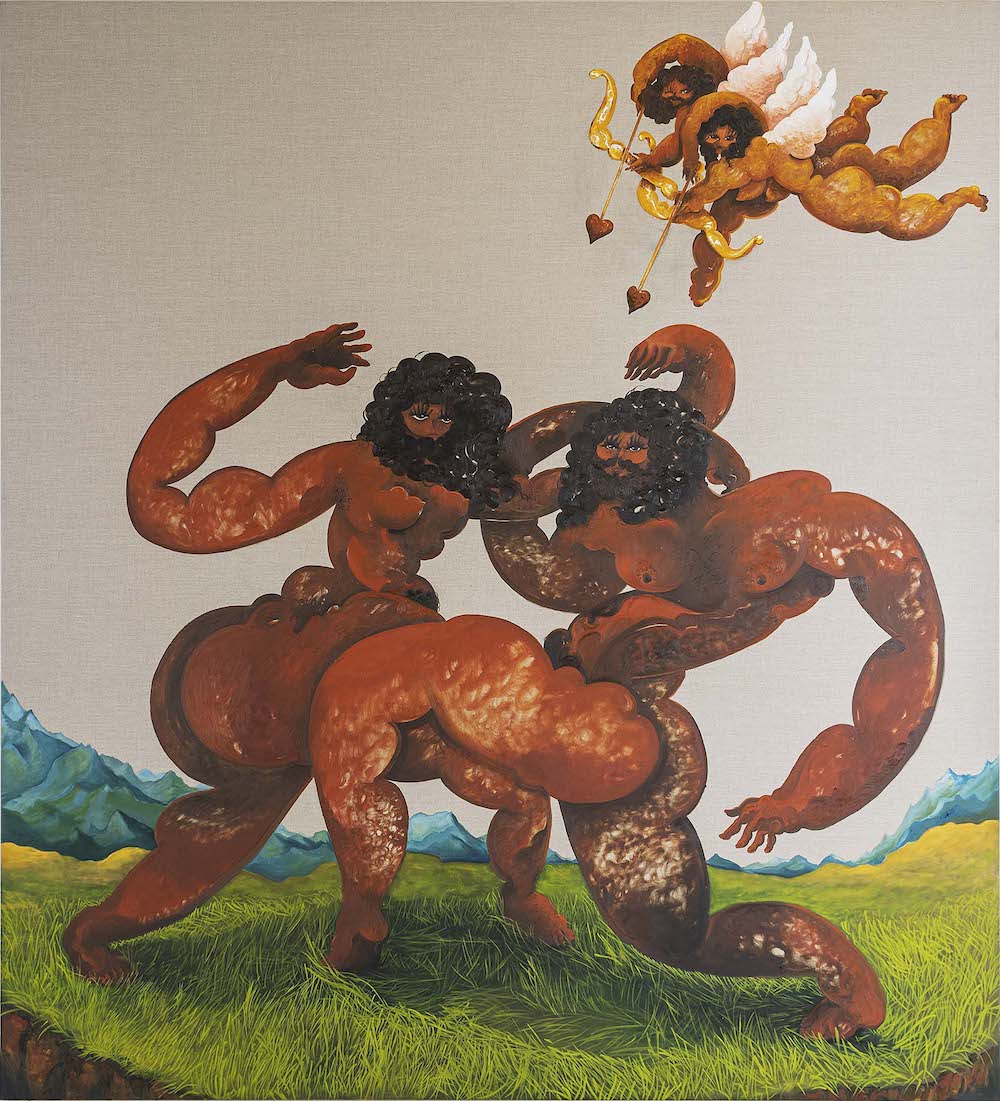 Asif Hoque, “The Angagement: A Duet of Lovers,” 2020, photo by Zach Balber, courtesy of Mindy Solomon Gallery and the artist.
Asif Hoque, “The Angagement: A Duet of Lovers,” 2020, photo by Zach Balber, courtesy of Mindy Solomon Gallery and the artist.
The vessels that are central to many of Hoque’s works equally evoke rich traditions and artisanship from Roman clay pots to Bangladeshi lala mati and Murti sculptures, whether utilitarian or spiritual in nature. Many of his latest works lean on a multitude of ancient traditions as complex and layered as the artist, but they are also just as much a depiction of contemporary ideas. The biomorphic vases are a contemporary expression as Hoque combines animalistic and humanoid elements with detailing evoking terracotta reliefs at Hindu temples. Each vase contains stories and sacred space, an abundance of thoughts waiting to be released by any viewer ready to continue the conversation and add their lines to the narrative.
Hoque is more and more trusting in an ancestral energy. An energy that also informs his goals when considering his work’s impact on his contemporaries and on future generations. As a gifted teacher, he recognizes the importance of representation. “Exposing Black and Brown kids to these angelic figures that have a classical sense to it will give them the energy and the power to see themselves outside of the norm that was placed on them,” said Hoque. He is excited for many to join his own journey and process of rediscovery that also closely connects to a shifting perspective and perception of Bangladesh and South Asia.
This journey will undoubtedly be shared and find expression in Asif Hoque’s art. He is an artist, thinker, teacher and scientist who wants to have skin-deep conversations, and create art that allows him to engage and work through his ideas and questions with emotional intelligence and intuition.
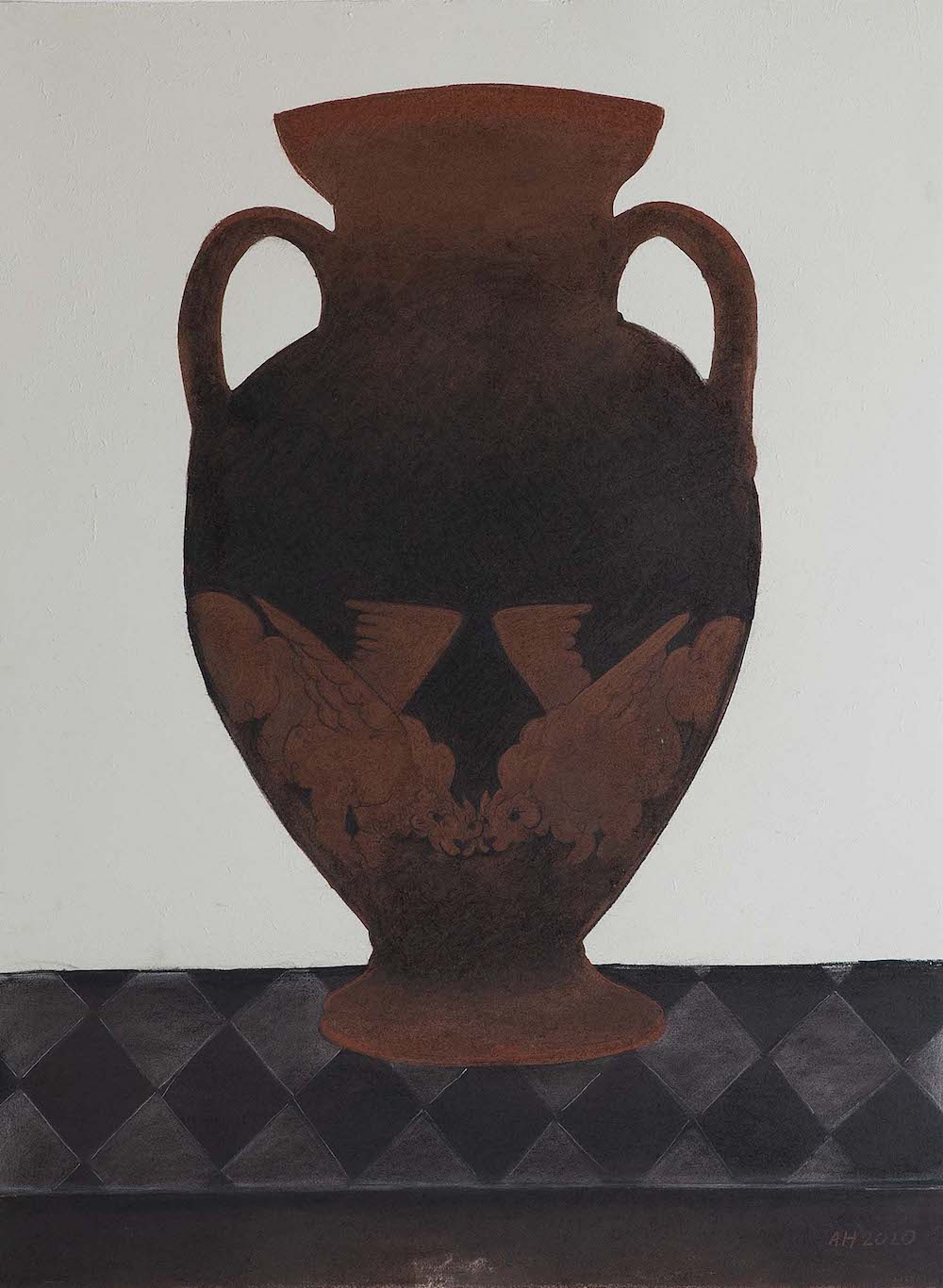 Asif Hoque, “1 am,” 2020, photo by Zach Balber, courtesy of Mindy Solomon Gallery and the artist.
Asif Hoque, “1 am,” 2020, photo by Zach Balber, courtesy of Mindy Solomon Gallery and the artist.









